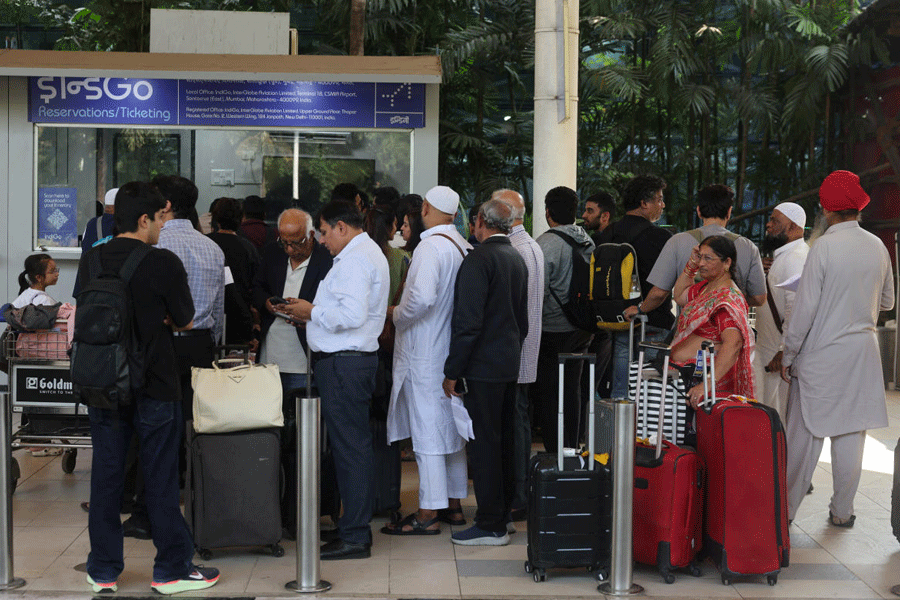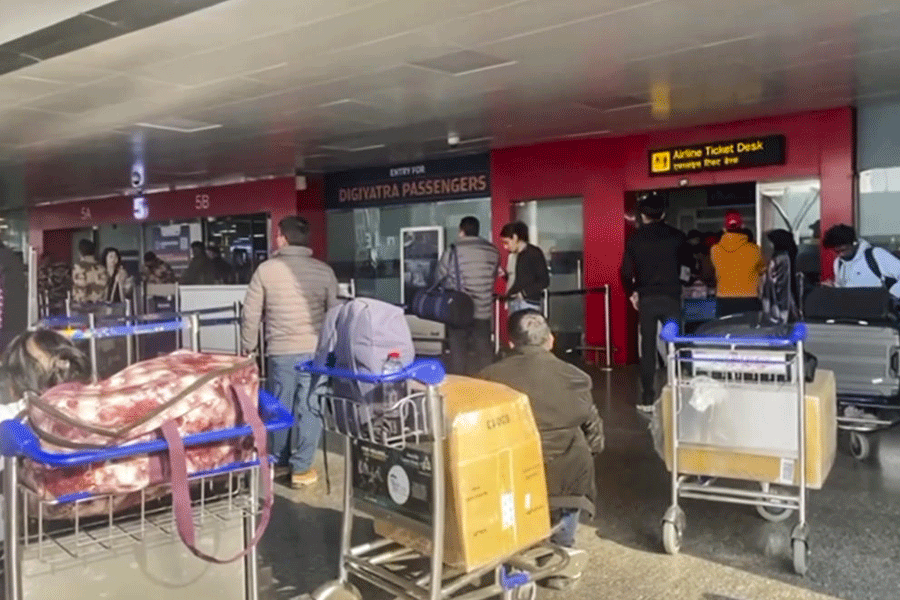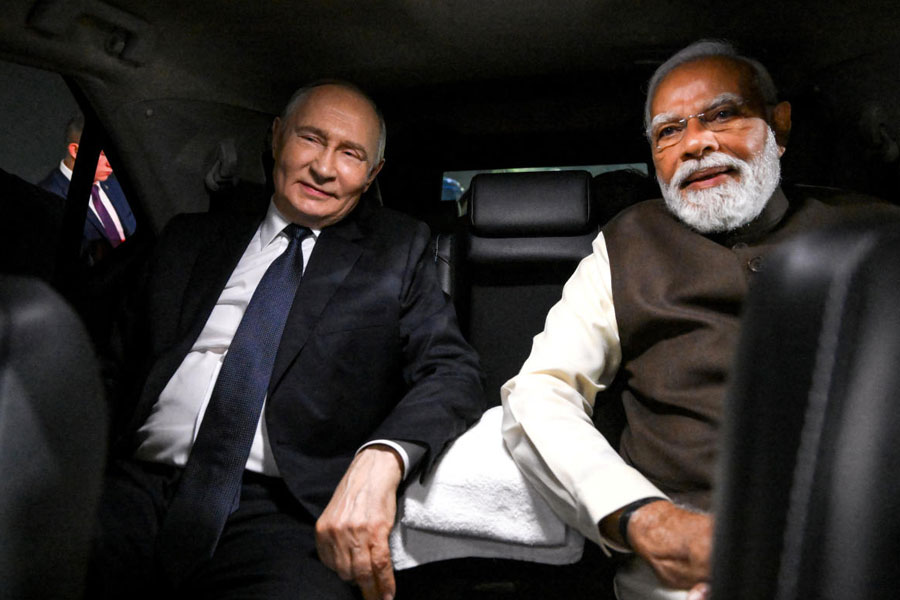Flights of folly
Flying officer Nirmal Jit Singh Sekhon dashed to his Gnat just as the piercing wail of the siren was reaching a crescendo. Six F-86 Sabres of the Pakistani Air Force were strafing the Srinagar airfield. Nirmal Jit took off in defiance of conventional wisdom that advised pilots to wait till after an attack had peaked. The 28-year-old shot two Sabres and was ultimately brought down after a tree-top level dogfight in which he was hopelessly outnumbered.
Among those who were witness to the young pilot's feat that forced the enemy aircraft to abandon plans of attacking Srinagar town was Manjit Singh Sekhon. Nirmal Jit, the only winner of the Param Vir Chakra (the highest gallantry award in the services) in the Indian Air Force, was six years junior to Manjit Singh. Both come from the same village, Issewal, near Ludhiana.
At almost every anniversary of Nirmal Jit's martyrdom, Manjit Singh has visited Issewal and relived those moments that happened on December 14, 1971. Issewal's proud villagers have showered Manjit Singh with love and respect. Issewal is but one of many Punjab villages where military service is a way of life, where most households have a son in the armed forces. They come into the services as country bumpkins and after rigorous training, the men are separated from the boys. The better ones are refined as officers. When they don their air force blues or army olive-greens, they also become gentlemen. These are fighting men, men trained to win wars, to kill the enemy and to survive in the harshest of battlefield environs. They are not diplomats.
Why else would Air Marshal -- now retired -- Manjit Singh Sekhon write to former Punjab chief minister Prakash Singh Badal, urging him to use his political clout to get him the position he so coveted -- as Air Officer Commanding in Chief, Western Air Command -- on his official letterhead?
Manjit Singh Sekhon rose through the ranks. Commissioned into the service as a transport (helicopter) pilot, he graduated to flying fighters -- itself a rarity in the service even now. It is easy to kick a man who is already down, and there are contemporaries of Sekhon in Delhi who say that he might not have made the grade -- as a fighter pilot -- in the normal course of things.
If that is true, then the wizard in Sekhon must have developed a talent for flying planes and winning awards almost overnight. And if Sekhon, the fighter pilot, is a fraud, then half of the IAF's 11,000-strong officer-cadre are cheats. One of the most decorated officers in the IAF when he retired -- Sekhon has won 17 awards including a Param Vishisht Seva Medal, a Vir Chakra, a Shaurya Chakra and the Vayusena Medal -- the former Air Officer Commanding in Chief (AOC-in-C), Southern Air Command, was the fifth seniormost officer when Air Chief S. Krishnaswamy summoned him to Delhi last fortnight and asked him to put in his papers.
In the IAF scheme of things, an Air Marshal posted as AOC-in-C Southern Air Com-mand will feel that he has been given a raw deal. The Southern Air Command, based in Thiruvananthapuram, guards airspace over the Bay of Bengal, the Lakshwadweep and Andaman and Nicobar. No frontline fighter detachments, though fighters can land in Madurai if required. Its aircrafts are mostly helicopters and transporters.
When Sekhon became a fighter pilot, he thought he had left all that behind. It is not wholly unusual for the senses to take leave in times of professional frustration. Since adrenalin flows faster in fighters, they also aim for fast track career paths.
In fact, Sekhon had been waiting eagerly to get into action. And action was what the Western Air Command -- the IAF's most strategic operational command -- promised. Guarding airspace from north of Rajasthan through Punjab to Jammu and Kashmir over an uneven international boundary means the IAF has posted the bulk of its fighting power in the region. A conservative estimate puts the IAF's strength here at about 10 MiG21 fighter squadrons plus squadrons of Jaguars, MiG27Ms and MiG23BNs and, of course, a major transport base at Chandigarh. Com-pared to the Southern Air Command, this was big.
Sekhon had sensed a chance to be AOC-in-C once earlier -- in 2001 -- and that was when he wrote to Prakash Singh Badal. A whiff of taking a shot at the post for a second time came on January 19 this year when the flamboyant Western Air Command chief Air Marshal V.M. Bhatia's plane was fired at.
As per rule, Air headquarters had to appoint an officer of the same rank for an inquiry. The IAF says the inquiry report is pending finalisation. But it is clear that Air Marshal Bhatia was in the wrong on at least one of two counts -- he was flying an An-32 on a maiden flight to Kargil airfield when he was supposed to be flying fighters. The An-32 is a larger and slower aircraft and the landing in Kargil is dicey.
It is possible that Air Marshal Bhatia was at fault on a second, more dangerous, point -- violating Pakistani (or PoK) airspace. With troops massed along the frontier, the incident could have snowballed into a major conflict. Pakistani authorities said in Islamabad later, that the aircraft was fired at when it entered PoK airspace and was fired at again by the Indian army when it re-entered India. Bhatia literally escaped by the skin of his teeth because a missile that struck the plane did not explode.
Just as Sekhon was putting all this together into his 'fact-finding report', someone lit a bomb behind his back, leaking to the press in Chandigarh, his letter to Badal.
Political lobbying to not only win new posts but even to retain existing ones in the armed forces is not all that new. Navy chief Admiral Vishnu Bhagwat had refused to implement the recommendation of the Appointments Committee of Cabinet which had asked for then Rear Admiral Harinder Singh to be promoted. Bhagwat felt the decision was made on political and not professional grounds. (Vice Admiral Harinder Singh resigned from the navy earlier this month citing personal reasons). Neither Air Marshal Manjit Singh Sekhon nor Air Marshal Bhatia were considered to be seriously in the running for the post of IAF chief. Air Marshal Bhatia is due to retire in October this year. Like Sekhon, he too is a highly decorated officer. Sekhon was to retire in May 2003.
Sekhon is back in Thiruvananthapuram now, packing his bags. In his village, Issewal, the Sarpanch and his fellowmen are angry that an officer of his calibre has had to make an unceremonious exit from the service.
But Sekhon is an officer of the armed forces, and supposed to lead by example. Even as he was putting in his papers, he fought back by citing instances of other officers who lobbied with politicos. Sadly for Sekhon, they are not known to have used official letterheads.
 Friday, 05 December 2025
Friday, 05 December 2025










